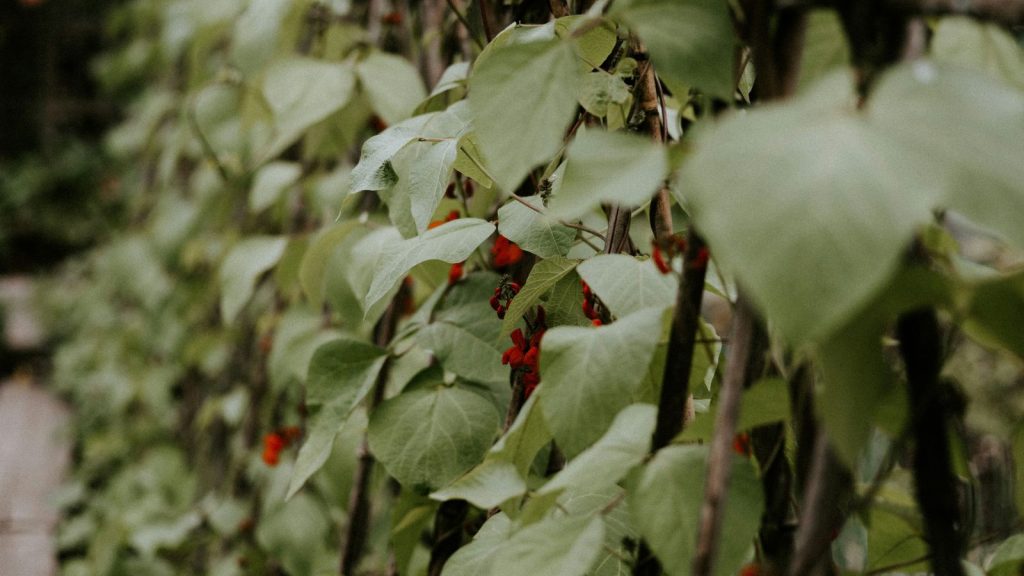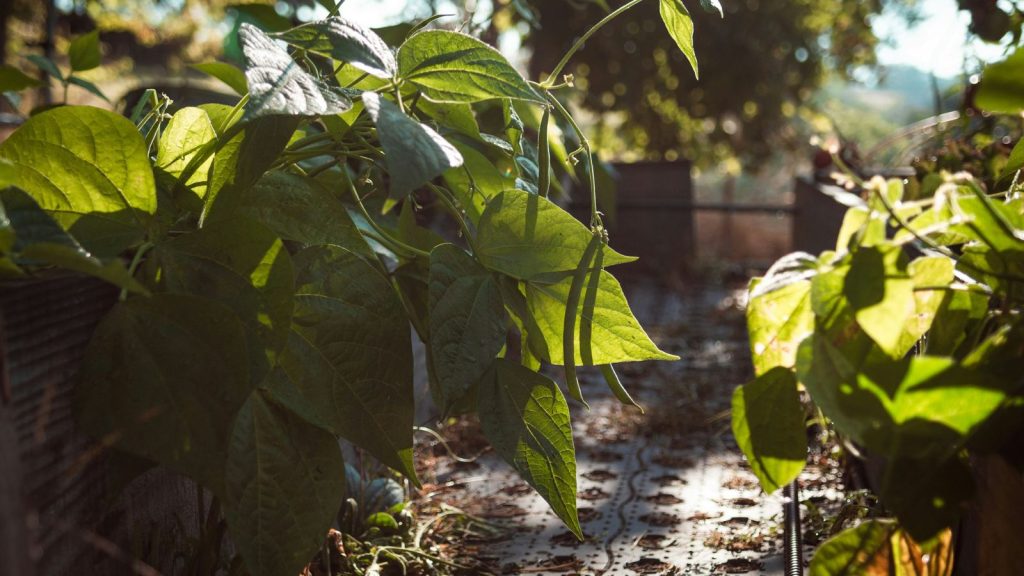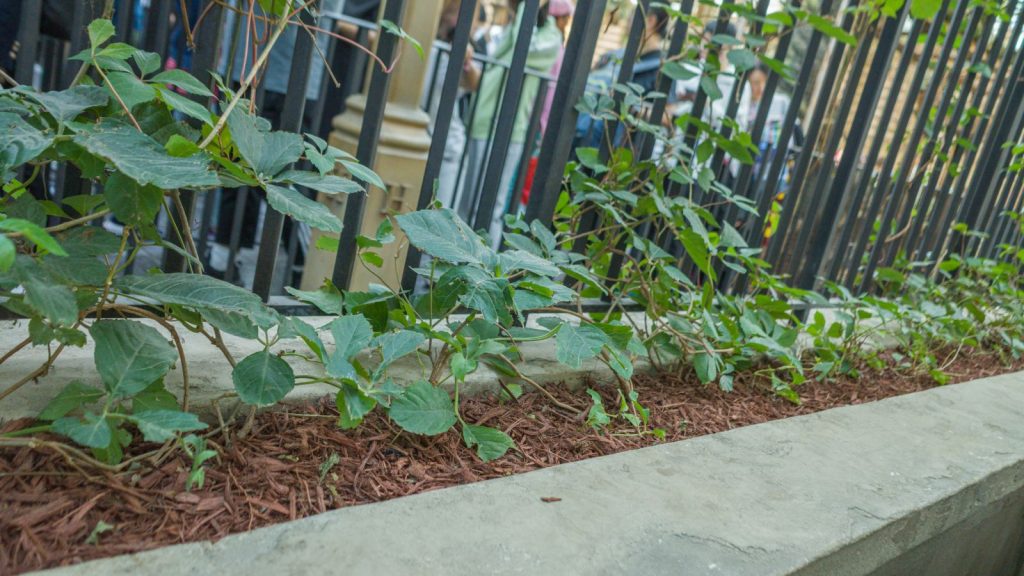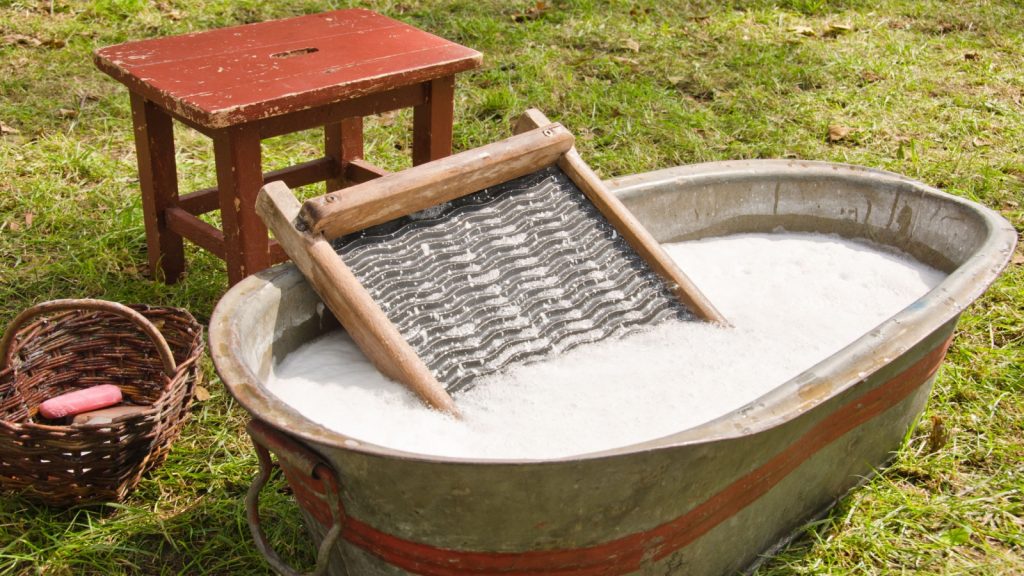There’s nothing quite like the satisfaction of harvesting buckets of fresh, crisp pole beans from your garden. Unlike their bush bean cousins, pole beans continue producing throughout the growing season, offering weeks of abundant harvests from a relatively small space. With the right approach, you can maximize your yields and enjoy these versatile vegetables well into fall.
Choosing the Right Varieties

Success starts with selecting varieties that thrive in your growing zone. Pole beans come in a remarkable diversity of options beyond the standard green bean:
Green Pole Beans:
- Kentucky Wonder (heirloom with exceptional flavor and productivity)
- Fortex (extra-long 10-inch stringless pods)
- Blue Lake (reliable producer with excellent disease resistance)
Purple Pole Beans:
- Purple Podded Pole (stunning color that turns green when cooked)
- Trionfo Violetto (early producer with beautiful purple flowers)
Yellow/Wax Pole Beans:
- Monte Gusto (bright yellow stringless pods)
- Golden Gate (buttery yellow, stays tender even when large)
Specialty Types:
- Rattlesnake (green pods with purple streaks, drought tolerant)
- Dragon Tongue (cream pods with purple stripes, incredible flavor)
- Scarlet Runner (stunning red flowers, large pods, perennial in zones 7+)
Purchase seeds from regional seed companies to ensure varieties adapted to your specific climate conditions. Options include High Mowing Seeds, Baker Creek Heirloom Seeds, Johnny’s Selected Seeds, and Southern Exposure Seed Exchange.
Soil Preparation For Maximum Yields
Pole beans are relatively heavy feeders but have specific soil needs. They perform best in:
- Loose, well-drained soil with plenty of organic matter
- pH between 6.0 and 6.8
- Soil that warms quickly in spring
For raised beds, mix in generous amounts of finished compost before planting. In traditional gardens, incorporate aged manure and compost in fall to allow proper breakdown before spring planting.
Avoid excessive nitrogen, which stimulates lush foliage at the expense of pod production. Instead, focus on phosphorus and potassium for better flowering and pod set. A thin layer of worm castings provides micronutrients without excess nitrogen.
Building Sturdy Trellises
Nothing is more disappointing than watching your productive bean plants collapse under their own weight. Pole beans can easily reach 8-10 feet tall and produce pounds of beans per plant, so sturdy support is essential.
The best trellis options include:
A-Frame Trellis: Creates a tunnel-like structure that allows harvest from both sides. Secure 8-foot poles at 45-degree angles and connect with horizontal supports. Cover with strong netting or string a lattice of twine for climbing.
Tepee Structure: Drive 8-foot poles into the ground in a circle, bringing tops together and securing with twine. Plant 3-4 beans around each pole. These work particularly well in windy locations and look charming in the garden.
Cattle Panel Arch: Bend a 16-foot cattle panel into an arch and secure the ends into the ground. This creates a walk-through tunnel that bears tremendous weight and lasts for years.
Single-Row Trellis: Set posts 8 feet apart with crossbars at the top. String heavy twine or wire vertically every 4-6 inches. This method allows for neat, organized rows that are easy to harvest.
Whatever structure you choose, ensure it’s installed before planting to avoid disturbing seedling roots later.
Planting Techniques for Success
Timing is everything with pole beans. They’re warm-season crops that will rot in cold, wet soil, so patience is key:
- Wait until soil temperatures reach at least 60°F (16°C)
- Plant 2-3 weeks after your last spring frost date
- For extended harvests, succession plant every 2-3 weeks through early summer
Plant seeds 1 inch deep and 3-4 inches apart along your trellis. For tepee structures, sow 6-8 seeds around each pole. Keep soil consistently moist but not waterlogged until germination, which typically occurs within 7-10 days in warm soil.
Many gardeners find success with inoculating their bean seeds with rhizobia bacteria before planting. These beneficial bacteria help beans fix atmospheric nitrogen, reducing the need for fertilizer while improving yields.
Training Young Plants

Young pole bean seedlings need a little guidance to find their way onto your trellis. Once they’ve developed their first true leaves and begin sending out tendrils, gently direct them toward the support structure.
Pole beans climb by twining their stems around supports in a counterclockwise direction. If they’re not finding the support on their own, you can loosely tie them with garden twine until they grab hold themselves.
Once they start climbing, pole beans require minimal intervention. Their natural growth habit will carry them up the trellis with impressive speed during warm weather – often several inches per day.
Watering Strategies for Maximum Production
Consistent moisture is crucial for pole bean production, particularly during flowering and pod development. Inconsistent watering leads to tough pods, poor yields, and blossom drop.
For best results:
- Provide 1-1.5 inches of water weekly, adjusted for rainfall
- Water deeply at the soil level rather than overhead
- Water in the morning to allow foliage to dry quickly
- Increase watering during hot, dry periods, particularly when plants are flowering
A simple drip irrigation system with a timer delivers water efficiently directly to the root zone, reducing disease and water waste. For those on a budget, soaker hoses achieve similar results.
Harvesting for Continued Production
The secret to prolonged harvests is frequent picking. Once beans start producing, check your plants every 1-2 days. Young, tender pods taste best, and regular harvesting stimulates the plants to produce more flowers and pods.
Harvest when pods are firm but still tender, before seeds inside become lumpy and visible. Most varieties are ready when pods are about the thickness of a pencil. Always use two hands when picking – one to hold the vine and the other to pull the bean – to avoid damaging the plant.
During peak production, a single 10-foot row of pole beans can easily yield 3-4 pounds of beans weekly. Preserve excess by blanching and freezing, or try pickling them for delicious dilly beans.
Common Challenges and Solutions
Even with proper care, pole beans can face challenges:
Bean Beetles: These spotted pests can devastate plants. Control with row covers until flowering, then use manual removal and organic sprays like neem oil or pyrethrin when necessary.
Powdery Mildew: This white dusty fungus appears in humid conditions. Improve air circulation, avoid overhead watering, and apply a solution of 1 tablespoon baking soda, 1 tablespoon horticultural oil, and 1 gallon of water as a preventative.
Blossom Drop: When flowers fall without setting pods, the usual culprits are extreme heat, drought stress, or excessive nitrogen. Provide shade during heat waves and ensure consistent moisture.
Poor Climbing: Some varieties are more vigorous climbers than others. If plants struggle to climb, loosely tie them to the support until they take hold naturally.
Saving Seeds for Next Year
One of the joys of growing pole beans is how easily they can be saved for future seasons. Simply allow some pods to mature fully on the vine until they’re dry and brittle. The seeds inside will be hard and fully colored.
Harvest these mature pods when they’re completely dry, shell the beans, and store in a cool, dry place in labeled paper envelopes. Most bean varieties will remain viable for 3-4 years when stored properly.
With these practices in place, your pole bean harvest can be truly spectacular – productive enough to enjoy fresh beans daily during the growing season while still having plenty to preserve for winter meals. The vertical growth habit also makes them perfect for small-space gardens, providing tremendous yields from minimal square footage.
James is a former logistics coordinator and wilderness safety instructor, whose practical experience taught him the value of sensible preparedness and calm resilience. Passionate about self-reliance, James teaches everyday skills—like water purification, emergency communication, and outdoor safety—to help people confidently handle life's disruptions without fear or overwhelm. His approachable style combines real-world insights with relatable, personal stories and experiences.



